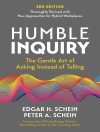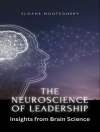The most important work by a key figure in German thought, Helmuth Plessner’s Levels of Organic Life and the Human, originally published in 1928, appears here for the first time in English, accompanied by a substantial Introduction by J. M. Bernstein, after having served for decades as an influence on thinkers as diverse as Merleau-Ponty, Peter Berger, Habermas, and the new naturalists.
The Levels, as it has long been known, draws on phenomenological, biological, and social scientific sources as part of a systematic account of nature, life, and human existence. The book considers non-living nature, plants, non-human animals, and human beings in turn as a sequence of increasingly complex modes of boundary dynamics—simply put, interactions between a thing’s insides and surrounding world. On Plessner’s unique account, living things are classed and analyzed by their “positionality, ” or orientation to and within an environment. “Life” is thereby phenomenologically defined, and its universal yet internally variable features such as metabolism, reproduction, and death are explained.
The approach provides a foundation not only for philosophical biology but philosophical anthropology as well. According to Plessner’s radical view, the human form of life is excentric—that is, the relation between body and environment is something to which humans themselves are positioned and can take a position. This “excentric positionality” enables human beings to take a stand outside the boundaries of their own body, a possibility with significant implications for knowledge, culture, religion, and technology.
Plessner studied zoology and philosophy with Hans Driesch in the 1910s before embarking on a highly productive philosophical career. His work was initially obscured by the superficially similar views of Max Scheler and Martin Heidegger and by his forced exile during World War II. Only in recent decades, as scholarship has moved more squarely into engagement with issues like animality, embodiment, human dignity, social theory, the philosophy of technology, and the philosophy of nature, has the originality and depth of Plessner’s vision been appreciated.
A powerful and sophisticated account of embodiment, the Levels shows, with reference both to science and to philosophy, how life can be seen on its own terms to establish its own boundaries, and how, from the standpoint of life, the human establishes itself in relation to the nonhuman. As such, the book is not merely a historical monument but a source for invigorating a range of vital current conversations around the animal, posthumanism, the material turn, and the biology and sociology of cognition.
This modern philosophical classic, long-awaited in English translation, is a key book both historically and for today’s interest in understanding philosophy and social theory together with science, without reducing the former to the latter.
Tabla de materias
Foreword from the Helmuth Plessner Society | vii
Translator’s Preface and Acknowledgments | ix
Preface to the First Edition (1928) | xv
Preface to the Second Edition (1965) | xix
Introduction | xxxvii
J. M. Bernstein
1. Aim and Scope of the Study | 1
The Development of Intuitionist Lebensphilosophie in Opposition to
Experience, 3 • Lebensphilosophie and the Theory of the Humanities, 11 •
Working Plan for the Foundation of a Philosophy of the Human, 22
2. The Cartesian Objection and the Nature of the Problem | 34
Extension vs. Interiority and the Problem of Appearance, 34 •
Appearance as Originating in Interiority, 38 • The Prior Givenness
of Interiority and the Forward Displacement of Myself: The Proposition
of Immanence 41 • Extension as Outer World; Interiority as Inner
World, 46 • The Proposition of Representation and the Element
of Sensation, 51 • The Inaccessibility of Other I’s according to the
Principle of Sensualism, 55 • The Need for a Revision of the Cartesian
Dichotomy in the Interest of a Science of Life, 58 • A Methodological
Reformulation of the Opening Question, 64
3. The Thesis | 75
The Question, 75 • The Dual Aspect in the Appearance of Ordinary
Perceptual Things, 76 • Against the Misinterpretation of This Analysis:
A Closer Focus on the Subject Matter, 81 • The Dual Aspect of Living
Perceptual Things: Köhler contra Driesch, 84 • How Is Dual Aspectivity
Possible? The Nature of the Boundary, 93 • The Task of a Theory of the
Essential Characteristics of the Organic, 99 • Definitions of Life, 104 •
Nature and Object of a Theory of the Essential Characteristics of the
Organic, 110
4. The Modes of Being of Vitality | 115
Essential Characteristics Indicating Vitality, 115 • The Positionality of
Living Being and Its Spacelikeness, 118 • Living Being as Process
and Type; the Dynamic Character of the Living Form; the Individuality of the
Living Thing, 123 • Living Process as Development, 129 • The Curve of
Development: Aging and Death, 137 • The Individual Living Thing as a
System, 144 • The Self-Regulation of the Individual Living Thing
and the Harmonious Equipotentiality of Its Parts, 149 • Individual Living Things
as Organized: The Dual Meaning of Organs, 154 • The Temporality of
Living Being, 159 • The Positional Union of Space and Time and the
Natural Place, 168
5. The Organizational Modes of Living Being: Plants and Animals | 172
The Circle of Life, 172 • Assimilation—Dissimilation, 182 •
Adaptedness and Adaptation, 186 • Reproduction, Heredity,
Selection, 196 • The Open Form of Organization of the Plant, 202 •
The Closed Form of Organization of the Animal, 209
6. The Sphere of the Animal | 219
The Positionality of the Closed Form: Centrality and Frontality, 219 •
The Coordination of Stimulus and Response in the Case of an Inoperative
Subject (Decentralized Type of Organization), 227 • The Coordination of
Stimulus and Response by a Subject (Centralized Type of Organization),
231 • The Animal’s Surrounding Field Organized into Complex Qualities and
Things, 242 • Intelligence, 252 • Memory, 257 • Memory as the Unity of
Residue and Anticipation, 262
7. The Sphere of the Human | 267
The Positionality of the Excentric Form: “I” and Personhood, 267 •
Outer World, Inner World, Shared World, 272 • The Fundamental Laws
of Anthropology: The Law of Natural Artificiality, 287 • The Law of
Mediated Immediacy: Immanence and Expressivity, 298 • The Law of
the Utopian Standpoint: Nullity and Transcendence, 316
Appendix | 323
Glossary | 337
Notes | 345
Index | 359
Sobre el autor
J. M. Bernstein is University Distinguished Professor of Philosophy at the New School for Social Research. His writings include The Fate of Art: Aesthetic Alienation from Kant to Derrida and Adorno (1992), Recovering Ethical Life: Jürgen Habermas and the Future of Critical Theory (1995), Adorno: Disenchantment and Ethics (2002), and Against Voluptuous Bodies: Late Modernism and the Meaning of Painting (2006). His most recent book is Torture and Dignity: An Essay on Moral Injury (2015). He is working on a manuscript with the tentative title Human Rights: On the Foundations of Ecological Socialism, from which the essay in this volume is drawn.












